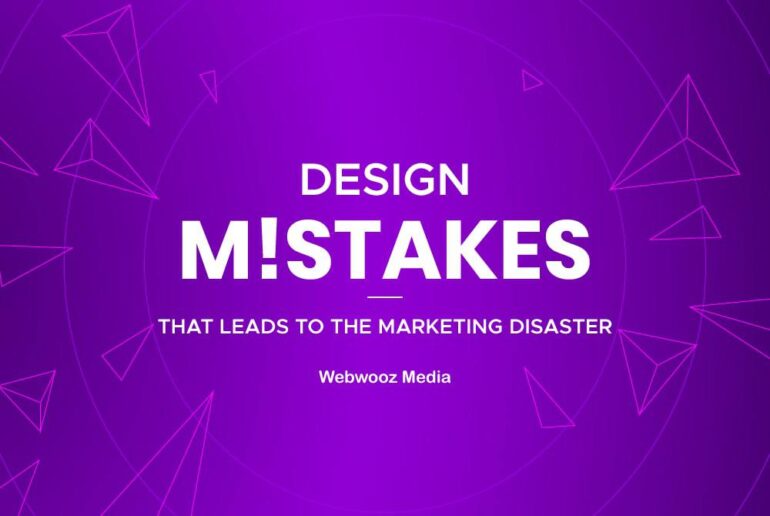In today’s world, most people are savvy customers. You might also be among them about visual design.
Do you remember what do you do whenever you visit a website or experience some kind of marketing/advertising?
Well, we are sure you scroll through a list of criteria, and after that, you make the buying decisions. In this decision, you may ask yourself whether the following company is trustworthy or not, should you give them your money, etc.
In reality, customers make judgments before they process what marketing is trying to convey. And, their decision is entirely dependent on visual design and emotion or feeling.
A Good Quality Visual Design extends beyond Typography and Colour
It’s observed quite often that people assume marketing success on its looks, but successful marketing involves a great combination of tangible and intangible factors. Let us look at both of them:
Tangible factors
Tangible factors include visual elements of visual design, such as the quality of your images and message, choice of your colours and fonts, etc. Do you know even the quality of your product or service is a crucial tangible factor? Tangible factor also effects your trustworthiness.
Intangible factors
Intangible factors comprise the expectations, trust, credibility and authority of a company’s product or service. Its underlying marketing message is also a key intangible factor.
A successful marketing design comprises of these intangible factors:
(i) Values and beliefs of your customers: If you want to connect with your customers and confirm your trustworthiness then, try to include their values and beliefs in your visual design. So, it is necessary to understand the personal benefits of your target audience.
(ii) Create relatable content: Make your customers believe that they are like you. Use right design elements and send a signal to your target audience that you are similar to them, you understand their pain points and how can you help them with your solutions.
(iii) Meet their expectations: Do you know customers often have unrealistic expectations from your business? Well, you can use good visual design to explain about your company or brand and what customers can expect to receive from your services.
When intangible and tangible design factors work combinedly then, it creates harmony in the design. You can attract your target audience. But you know only a few designers understand the importance of these two factors. Also, most entrepreneurs are unaware of the two sides to design, and as a result, some serious design mistakes directly influence their marketing initiatives. Additionally, visual design mistakes can increase customer resistance. Also, consumers may shift to another firm. Well, you can avoid losing your customers by understanding some of the most common design mistakes. Now, let us look at some of them:
1. A tangible/intangible conflict destroys your marketing message
For instance, a deals-of-the-day website is advertising a discount offer on a designer dress. They claim the designer is famous and have won many awards. To find out, you do a Google search. But you are unable to find the designer’s website. Also, no information states about the awards they’ve won.
Now, would you pay the price for the dress? Most of the savvy shoppers would say “no.” So, how can a customer be expected to trust these deals-of-the-day websites? In conclusion, the intangible (marketing message) conflicts with the tangible (reality). Always remember that your marketing should convey fluid and honest message. Customers always look for credible information that proves your claim.
How to avoid this problem?
Now, let us see how to avoid this type of conflict problem:
- Always choose words of value or personality to boost your business. It will help your marketing messages, and you’re your customers an idea of what your business is all about.
- Do you know a personality word influence visual design? Yes, it’s true. It helps in creating boundaries that a designer or marketing team must work within. At every step of the design process, see whether the font, colours and images support your personality word.
- The personality word may be “reliability,” “education,” “luxury,” or “fun.” Whatever it is, be sure to support it at every stage of the design process.
2. Your message and visuals are not matched
Do you know image conflicts create doubt? Whenever the tangible and intangible presentation factors aren’t in sync, customers start asking probing questions. Customers always expect your marketing and value proposition to be in sync.
Your design, visuals, words and message that you convey to the world speaks everything about your business. It also thereby creates customer expectations. Hence, tangible and intangible factors, including all the design elements of your business, should be matched.
How to avoid this problem?
If you want your message and visual design to match then, start creating a list of intangible factors. Well, these are the connections you need your customers to make when they think of your business.
For instance, you are selling baby products to moms. Here, your intangible factors could be something like a feeling of safety and security, peace-of-mind, etc. The essence of intangible factors into your marketing strategy directly influence your decisions on designing.
3. You ignore customer expectations
We all as consumers expect something from every profession. We want personal trainers to maintain their shape, artists to be entirely eccentric and creative, bankers and attorneys to be well-dressed and drive beautiful cars.
Similarly, your customers also have some expectations for your business. They mostly come to your website or products/services with the belief that your business will meet their expectations. If you fulfil their needs, they will be happy and satisfied.
But, when you are unable to do so, they become unhappy and respond negatively. They start posting negative reviews on the internet and your social media handles.
How to avoid this problem?
Now, let’s look at how to avoid this kind of critical problem. First of all, you need to expose customers’ expectations. You need to figure out where they are coming from. If you are clear of the origin of a customer’s expectations, then, you will be better equipped and ready to meet them.
Customer’s expectations evolve from:
(i) Marketing messages. Your competitors might be making vast and exceptional promises. Well, are you offering more or fewer benefits to your customers than what has been promised?
(ii) Word-of-mouth. Your old customer might have spoken highly positive about your business to a new customer. And, now they’ve set the expectations quite high among your new customers. If you didn’t fulfil their expectations, then, it is easier for your new customer to get disappointed.
(iii) Past experiences. Your customer might have been burned by one of your competitors. So, has his or her experience in your industry been positive or negative?
(iv) Personal needs. Do your customers wish your product/service to be customized to their identical needs?
In conclusion, you need to reach out to some of the customers and ask these questions. Their reply may surprise you!
4. Your visual design is improper, either too heavy or too light
It is common for marketing design to be improper, too heavy or too light. Visual Design receives the art piece treatment, with beautiful visuals or no visual elements at all.
- Beauty without benefit
Sometimes, it happens that customers lose interest in some great websites. The reason would be their unclear message.
- Ethos without excitement
And, sometimes you might find some websites with a light design, focused entirely on the message. Here, also customers lose interest because the design doesn’t give a correct direction. Consumers can feel as if they’ve been loaded with a ton of information. They get confused about what they should look first and don’t know how to navigate through the data.
How to avoid this problem?
If you wish to keep a proper balance between information and visuals, then, only your personality word can help you. For this, you need to spend some time exploring its tangible and intangible aspects.
Well, the tangible elements vary from visuals, typography to layout and colour.
Now, you may be thinking how these elements represent your personality word? For instance, if your personality word is exciting, then, you need to avoid dull, drab and safe tangible design elements.
After that, you’ll have to clarify intangible elements of your personality word such as the culture, behaviour, values, and expectations that are associated with the word. And your visual design should necessarily reflect these elements.
Hurry! Before you lose the time
Do you know your customers judge your marketing and business in milliseconds? So, now make your time count. And, balance all the tangible and intangible factors of your marketing design. We are surely amazing, and wonderful results are surely going to follow.
—
For learning on the related topics, do visit our other blogs👉
- Why you should think about getting an Explainer Videos!
- How to Communicate through Visual Storytelling
- Animation for Edutainment
- Let’s talk about Animation factor
- Advertisement + Animation
- What are some of the Marketing Myths
- Is your video marketing working
- 10 Reasons to use video in your content marketing





